On this week’s Rocket Roundup, the Chinese send a crewed mission to their new space station, SpaceX launches a new GPS satellite, China adds to their Yaogan satellite constellation, and Japan yeets a CubeSat from the International Space Station on behalf of Mauritius. Plus, this week in rocket history, we look back at the Soviet Salyut 3.
Podcast
Transcript
Hello, and welcome to the Daily Space. My name is Annie Wilson and most weekdays the CosmoQuest team is here putting science in your brain.
Today, however, is for Rocket Roundup. Let’s get to it, shall we?
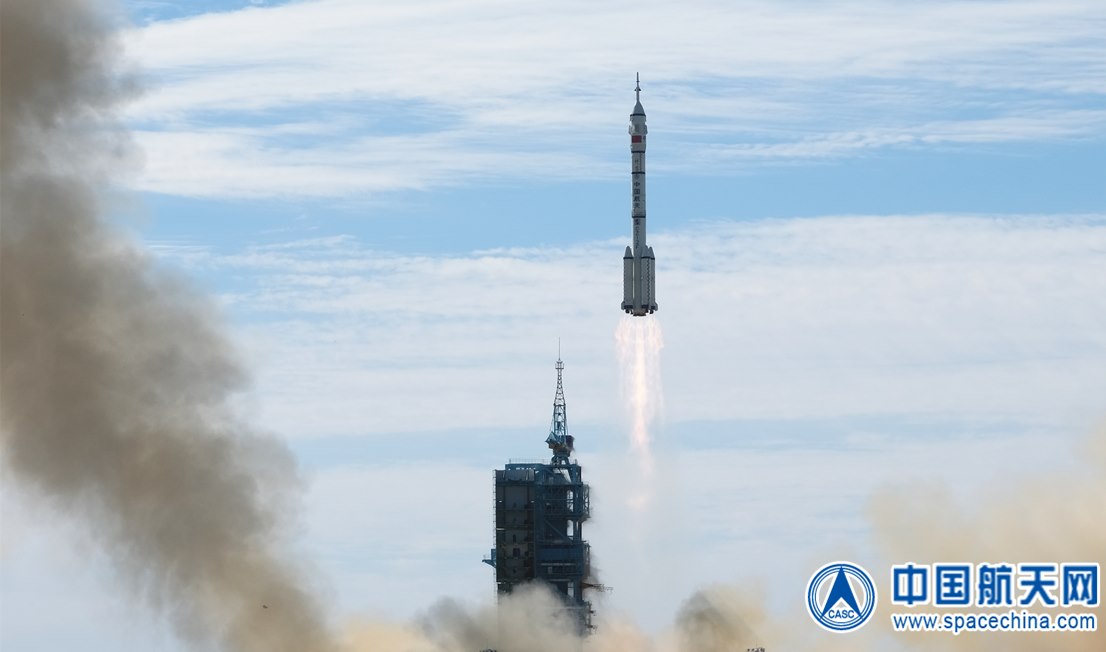
On June 17 at 01:22 UTC, a Chinese Long March 2F launched the Shenzhou 12 spacecraft from pad 91 at the Jiuquan Satellite Launch Center. Onboard was the first crew for China’s new space station, Nie Haisheng, Liu Boming, and Tang Hongbo. Nie is making his third spaceflight and is the oldest Chinese person to go into space at 56; Liu is making his second spaceflight, and Tang only his first. After a brief seven-hour trip to the space station, Shenzhou 12 docked with the Tianhe core module at 08:00 UTC. The three astronauts will spend three months in space performing experiments, spacewalks, and station maintenance. This was the first Chinese crewed launch in five years.
The Long March 2F has an unusual staging sequence compared to the rockets we typically cover here on the show. The first stage only burns for twenty seconds longer than the boosters, meaning they separate at almost the same time, while on the second stage, the main engine cuts off prior to spacecraft separation. The four vernier engines carry the rocket the rest of the way to orbit, allowing for fine control of the orbit the spacecraft is inserted into, which is particularly necessary for short rendezvous launches.
The reason for this unusual staging sequence is that the first stage, boosters, and second stage all use the same high thrust YF-20B engine. The main engine needs to cut off early or the crew would be subjected to unnecessarily high G forces.

If you think that the Shenzhou spacecraft looks like a near copy of the Russian Soyuz, you’re right. The Shenzhou and Soyuz share the same three-module layout with orbital, descent, and service modules. The Chinese and Russians collaborated a lot in the early- to mid-1990s, and this collaboration included the transfer of equipment, documentation, and training relating to the Soyuz spacecraft as well as other space systems,
One major difference between the two spacecraft is the docking port. The Soyuz uses the same version it has used since the 1960s. The Shenzhou, on the other hand, uses a port derived from the Autonomous Peripheral Attachment System, also known as APAS-95. APAS-95 was itself slightly modified from the port developed for the Soviet Buran space shuttle orbiter.
The Shenzhou orbital module also had solar panels and was capable of functioning independently in orbit on Shenzhou 1 through 7, running experiments on the front of the module after the descent module returned to Earth. Starting with Shenzhou 8, this capability was removed to make room for the docking port. Another minor difference is that Shenzhou has four orbital maneuvering engines instead of the single orbital maneuvering engine on Soyuz.
Shenzhou 12 is the third of eleven planned missions that will take place over the next two years to complete the Chinese space station. Two additional station modules based on the previous Chinese space station are planned to be added, and there will be further crew and cargo flights.
On to the more routine, uncrewed launches.
On June 17 at 16:09 UTC, a SpaceX Falcon 9 launched the GPS-III Space Vehicle 5 into orbit from SLC-40 at Cape Canaveral Space Force Station in Florida. This was the first national security mission to be flown on a reused Falcon 9, with Booster 1062 making its second flight after launching GPS-III SV 4 back in November 2020.
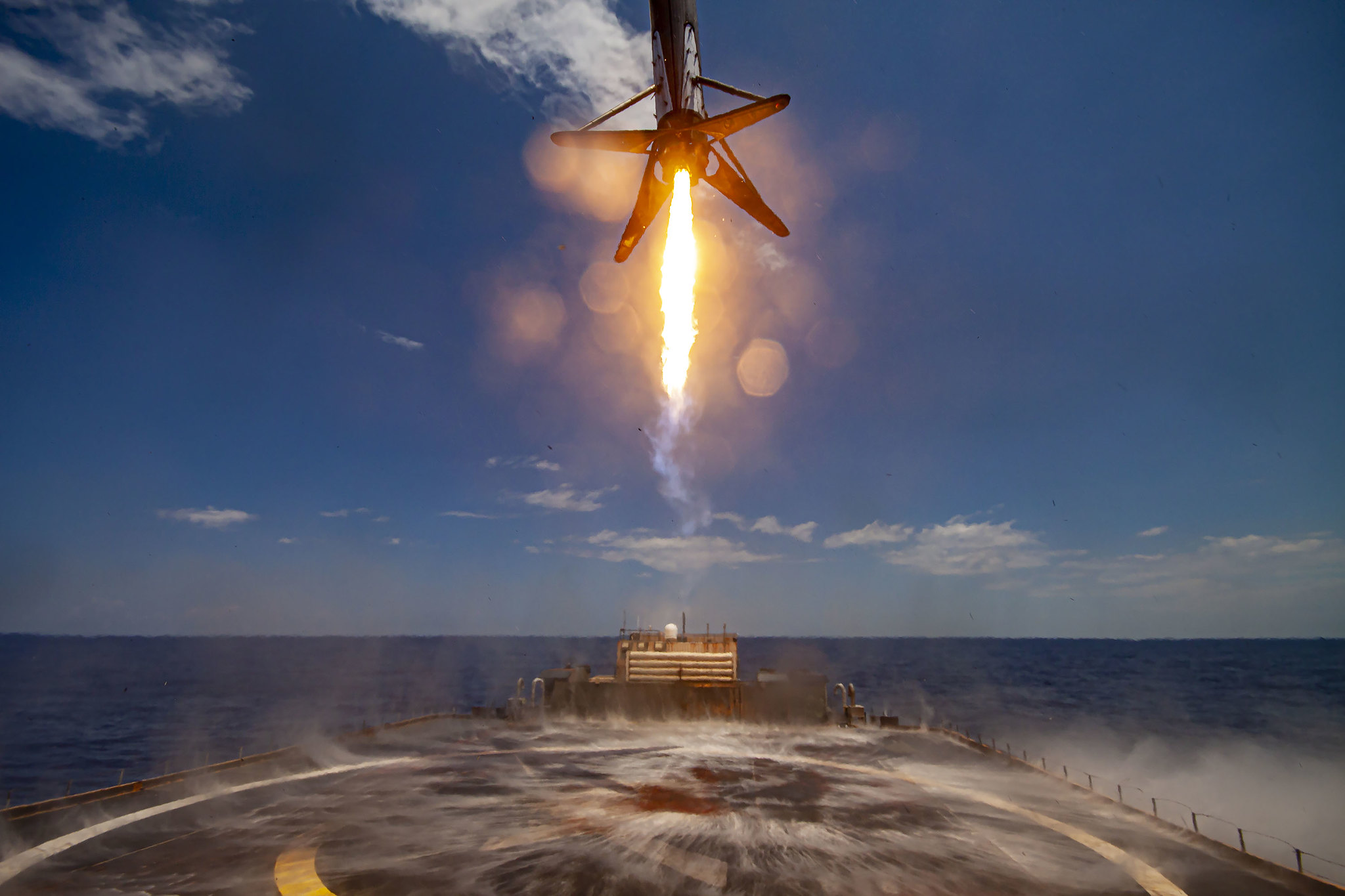
For those of you keeping score at home, Booster 1062 made its second landing on the drone ship Just Read The Instructions. Both fairings were brand new and were successfully fished out of the water.
The GPS III satellites are the replacement for the aging GPS II constellation. The oldest currently operational GPS satellite is Navstar 43, a GPS Block IIR spacecraft launched in 1997. Its design life was 7.5 years, and it has exceeded that by sixteen years.
Improvements made over previous generations include having three times higher positional accuracy, being eight times more difficult to jam, and a new civilian signal called L1C, which is compatible with other nations’ global and regional satellite navigation systems, such as Galileo, Beidou, and GLONASS.
The next generation of GPS III, named GPS III Follow On, will incorporate a “fully digital navigation payload, an accuracy-enhancing Laser Retro-reflector Array, a Regional Military Protection capability and a government-furnished Search & Rescue payload.”
Next up, on June 18 at 06:30 UTC, a Chinese Long March 2C launched the Yaogan-30 09 mission from the Xīchāng Satellite Launch Center in southwestern China.
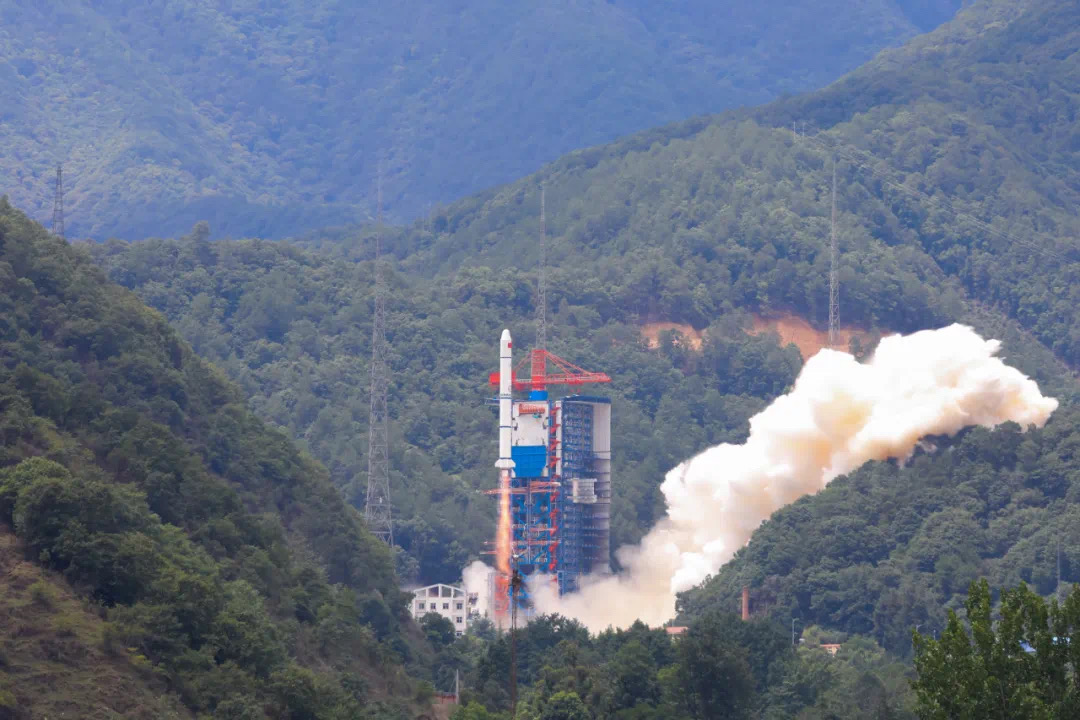
This was the ninth group of three Yaogan 30 satellites launched for this constellation, with previous batches going up every few months since mid-2017. Like many Chinese satellite launches, there wasn’t a lot of detail about the payloads publically shared by Chinese media. What we do know is that these satellites are launched in groups of three and that their name, “Yaogan”, translates to “remote observing.” The China Academy of Space Technology stated that they “will be mainly used to carry out electromagnetic environment detection and related technical tests.”
Also onboard was Tianqi-14, a satellite that will provide Internet Of Things connectivity for the private company Guodian Gaoke. Tianqui-14 weighs about 50kg – that’s 25 two-liter soda bottles –and also contains a small camera for education.
The next story isn’t a launch, but we wanted to tell you about it.
On June 22, 2021, at 10:55 UTC, MIR-Sat 1, the Mauritius Imaging and Radiotelecommunications Satellite, was deployed from the airlock in the Japanese Experiment Module, Kibo, on the International Space Station. It is Mauritius’ first-ever smallsat and first solo satellite launch. The CubeSat was brought up inside the CRS-22 Cargo Dragon launched earlier this month. Kibo’s airlock can accommodate payloads up to about the size of a large storage bin you might have on your deck or patio.
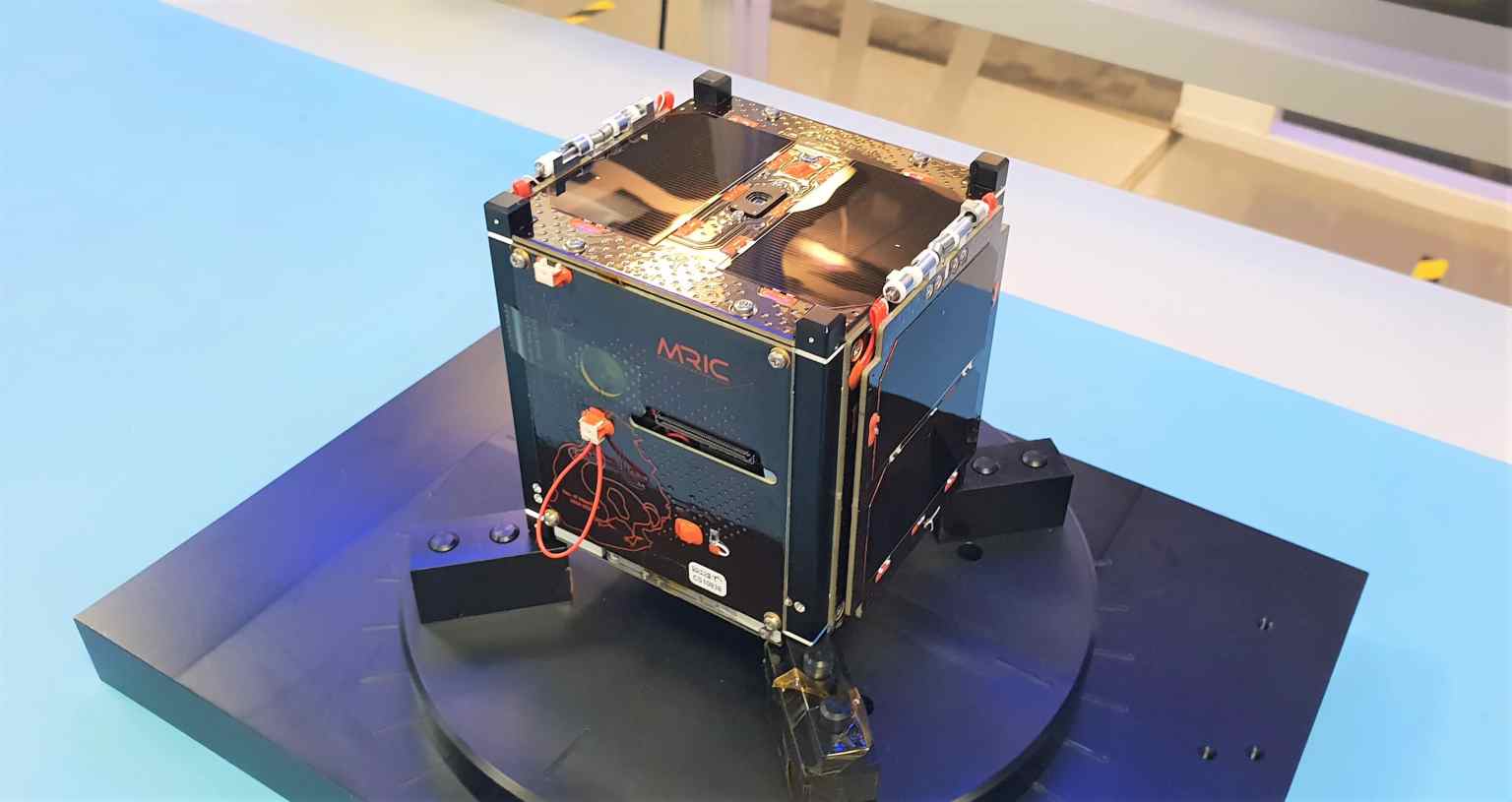
The satellite or science experiment to be put on the Exposed Facility, a platform on Kibo with attachment fixtures for external payloads, is attached to a sliding arm inside Kibo, pushed into the airlock, and then into space once the inner hatch is closed. After the object is on the space side, it is removed with the remote manipulator arm. From there, it can be placed on the Exposed Facility or yeeted into free space. In this case, it was launched into space.
MIR-SAT 1 got its ride into space by winning the third KiboCube competition sponsored by JAXA and the United Nations Office for Outer Space Affairs.
MIR-Sat 1’s primary mission is to demonstrate that Mauritius can build a satellite, including design, assembly, and testing. It has an RGB camera as well as a “V/U 9600bps GMSK digipeater”, which is a device used for amateur radio communications. The camera will be used to image Mauritius and its Exclusive Economic Zone to determine the best way to manage its ocean resources, mitigate natural disasters, and manage traffic.
This Week in Rocket History
This week in rocket history, we look back at the launch of Salyut 3.
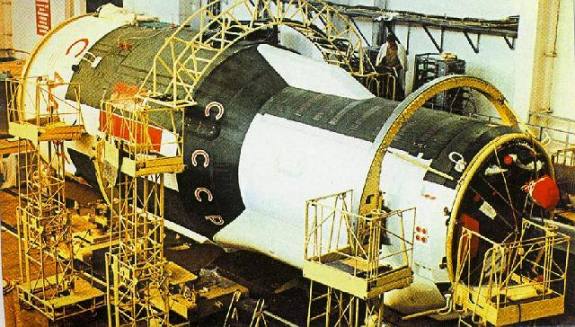
One of the major features of Almaz was a huge film capsule, which was returned at the end of the mission for analysis. The theory of operation was that, instead of launching a bunch of uncrewed satellites with cameras and limited film to undertake preset missions, a trained human crew could operate the camera in real-time. The crew could use their judgment and take pictures of interesting, even unknown military targets, without wasting film if an intended target was obscured by cloud cover. A human could also report findings in near real-time over radio instead of waiting literally weeks for a bucket of film to be used up, recovered, processed, and analyzed. For comparison, today’s satellites send back digital images that can be analyzed almost as soon as they are received. The limiting factor isn’t film or transmission time, but how often the satellite passes over an area.
Back to Salyut 3: the first mission to the new station was Soyuz 14, which was named Berkut or “Golden Eagle”. It was launched on July 3, 1974, at 18:51 UTC. Onboard were commander Pavel Popovich and engineer Yuri Artyukin. It used the new Soyuz-T spacecraft, which was specifically developed to transport crew to the new Salyut and Almaz stations.
One of the major differences between the contemporary Soyuz and the new Soyuz-T was the removal of the pair of solar panels as the spacecraft could receive power from the station itself. The weight reduction allowed the addition of equipment needed to control the station remotely from the Soyuz and new parachutes.
Soyuz 14 successfully docked with Salyut 3 on its fifteenth orbit, or just less than a day after launch. Once onboard they began their super-secret mission, which mainly consisted of determining if crewed orbital reconnaissance was worthwhile through operating the numerous cameras on the station.
The two crew also did medical tests to further their knowledge of the effects of prolonged spaceflight on the human body. In total, the crew spent fifteen days, seventeen hours and thirty minutes in space.
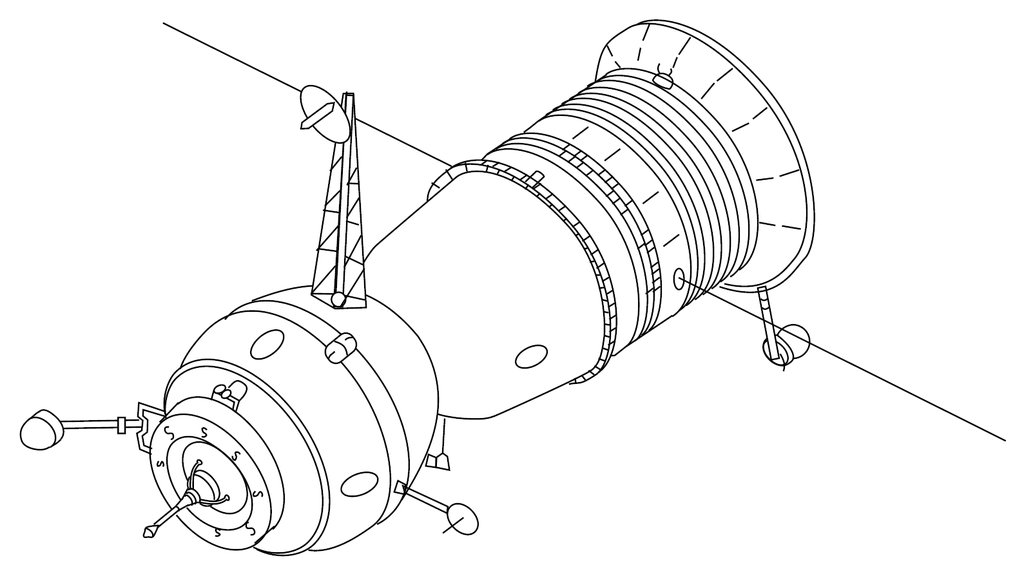
Soyuz 14 was Yuri’s only flight and Pavel’s last flight.
Soyuz 15 was the second mission sent to Salyut 3. It carried Lev Dyomin and Gennadi Sarafanov. It failed to dock to Salyut 3 after its rendezvous radar failed, and it didn’t have enough fuel for multiple manual docking attempts. To ensure that there was enough propellant for safe reentry, the capsule was brought down after only two days in space.
Unfortunately, there wasn’t enough time to fix the radar in the next capsule before the station also ran out of maneuvering propellant, so the station was intentionally deorbited over the Pacific ocean. The radar in that next capsule was eventually repaired, and the craft flew to a later Salyut station.
Prior to Salyut 3’s deorbit, ground controllers commanded a 23-mm Nudelman aircraft cannon mounted on the aft of Salyut 3 to fire on January 24, 1975. Yes, they fired a gun in space. Why did they fire a gun in space? To make sure it worked in case there was a need to defend Soviet space stations from American spacecraft interfering with its intelligence mission.
As far as we know, this is the only time something like this has been mounted on a space station and actually fired.
Statistics
To wrap things up, here’s a running tally of a few spaceflight statistics for the current year:
Toilets currently in space: 7: 3 installed on the ISS, 1 on the Crew Dragon, 1 on the Soyuz, 1 on the Shenzhou, and 1 on Tianhe
Total 2021 orbital launch attempts: 58, including 3 failures
Total satellites from launches: 1157
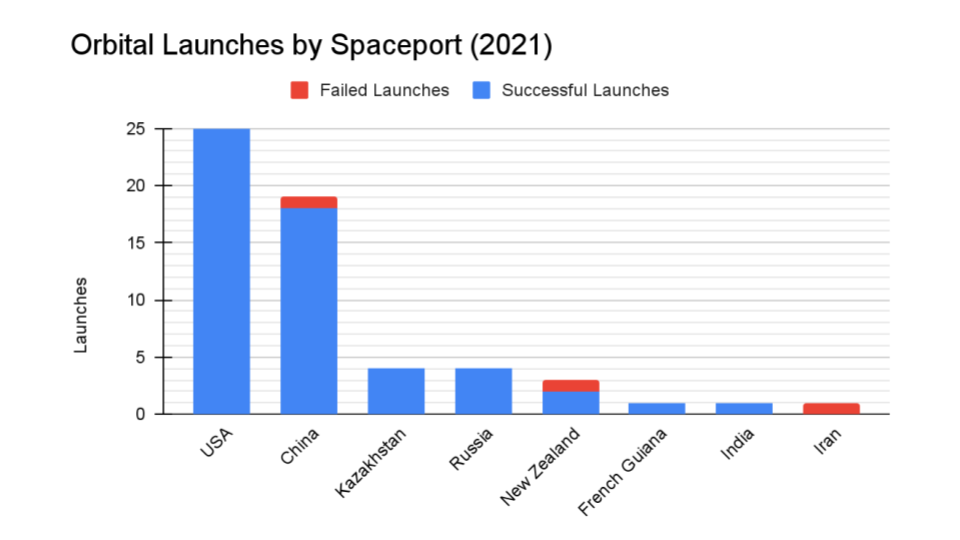
I keep track of orbital launches by where they launched from, also known as spaceport. Here’s that breakdown:
USA: 25
China: 19
Kazakhstan: 4
Russia: 4
New Zealand: 3
French Guinea: 1
India: 1
Iran: 1
All we know at this point is that it appears that Iran attempted a launch earlier this month but that launch wasn’t successful. We’ll bring you more about this in a future episode if information becomes available.
Random Space Fact
And your random space fact for the week is that the sky crane that gently dropped the Mars 2020 Perseverance rover on the Martian surface was originally built as the Structural Test Article for the sky crane developed for the Curiosity rover.
This has been the Daily Space.
Learn More
China Launches First Crewed Mission in Five Years
- CASC press release (Chinese)
- Jiuquan SLS (Astronautix)
- Shenzhou (Astronautix)
- Chinese Bought Russian Technology to Aid Space Program (Space.com)
- Launch video
SpaceX Sends Up Another GPS-III
- SpaceX mission page (Archive)
- Navstar 43 (NASA)
- GPS III (Lockheed Martin)
- Launch video
China Continues to Add to Yaogan Constellation
- CAST press release (Chinese)
- CASC press release (Chinese)
- Tianqi info page (Gunter’s Space Page)
- Launch video
Mauritius Yeets Smallsat From ISS
- MIR-SAT 1 to Deploy Tomorrow into Orbit from the ISS (Space in Africa)
- MIR-SAT1-First Mauritian Infrared Satellite selected under the UNOOSA/ JAXA KiboCUBE 2018 Program (Mauritius Research Council)
- Kibo Structure (JAXA)
- MIR-Sat 1 info page (Gunter’s Space Page)
- Yeet video
This Week in Rocket History: Salyut 3
- Soyuz 14 (Astronautix)
- Soyuz 15 (Astronautix)
- More Details for 1974-06-24 (Astronautix)
- Almaz OPS (Astronautix)
- Popovich, Pavel Romanovich (Astronautix)
- Artyukhin, Yuri Petrovich (Astronautix)
- Demin, Lev Stepanovich (Astronautix)
- Sarafanov, Gennadi Vasiliyevich (Astronautix)
Credits
Host: Annie Wilson
Writers: Elad Avron, Dave Ballard, Gordon Dewis, Pamela Gay, Beth Johnson, Erik Madaus, Ally Pelphrey, and Annie Wilson
Audio and Video Editing: Ally Pelphrey
Content Editing: Beth Johnson
Executive Producer: Pamela Gay
Intro and Outro music by Kevin MacLeod, https://incompetech.com/music/


 We record most shows live, on Twitch. Follow us today to get alerts when we go live.
We record most shows live, on Twitch. Follow us today to get alerts when we go live.